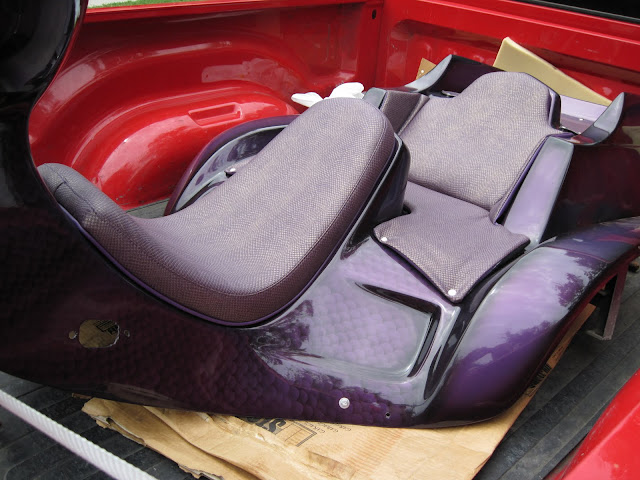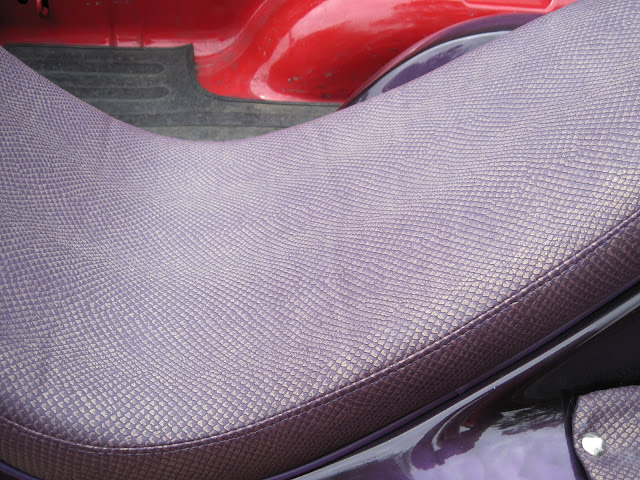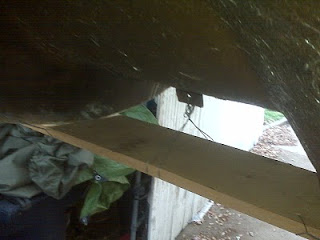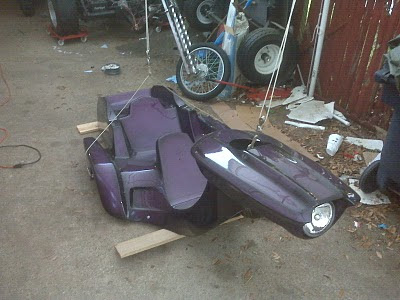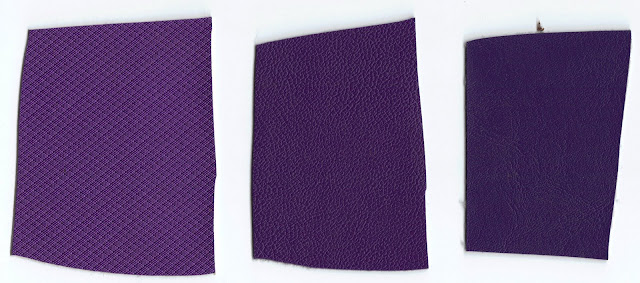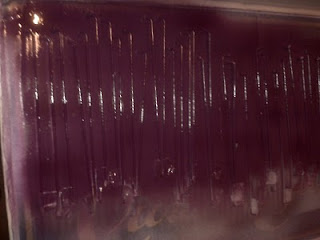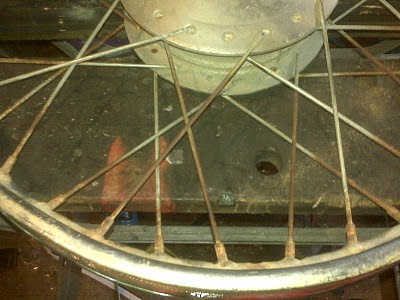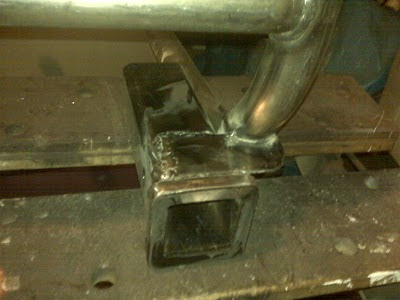I have basically 21 calendar days until Memorial Day Weekend, which is when I want to unveil The Dragon Trike, and only two more weeks after that before Trike Week.
Yikes!
So, tonight I did a bunch of little stuff, so much little stuff I’m sure I’ll end up forgetting to list some of it.
In no particular order, I:
mounted the trigger wheel sensor bracket
mounted the trigger wheel sensor
installed the newly purpled fuel pump block off
determined how to fabricate the CLT sensor
cleaned and painted the trigger ring
painted the distributor eliminator plug
put a coat of purple on the spokes
put the last coat of purple on the wheel hub
located and cleaned the distributor clamp (needed for plug)
put the body on temporarily so I could:
measure for the rear body brace
measure for the relay/fuse/ECU panel
estimated the thickness of the fiberglass where the ignition switch will go
measure the diameter of the ignition switch so I can acquire an appropriate holesaw
Perhaps the scariest, yet arguably one of the most important things was to make a master list of tasks left to complete the trike.
There are basically four categories:
1. Things needed to start/run/tune the engine
attach and adjust trigger ring
connectorize EDIS sensor
mount EDIS module
mount coil pack
cut plug wires as needed
wire relay/fuse board
mount ECU in weatherproof box relay/fuse board
wire all sensors etc to ECU
mount fuel pump and filler spout to tank
mount fuel tank (possibly higher off ground)
connectorize fuel pump
get fuel filter
connect fuel pump to filter and TB
build CLT sensor
connect vacuum to MAP; plug unused ports
mount O2 sensor
wire OS sensor module
baffle in stinger (for my ears)
2. Things needed to make the trike driveable/testable
build throttle cable
connectorize and install switch pod and speedo
install throttle
install grips
wire alternator light
wire oil pressure light
wire alternator to battery
mount and wire ignition switch
modify/build rear body bracket
mount relay board to body bracket
finish front wheel
3. Things needed to make the trike roadworthy/legal
wire headlight
wire tail/brake/turn lights
find front signal lights
wire front signal lights
find backup light
wire backup light
wire license plate light
find license plate
get and install front brake cable
mirrors
inspection
build footrest
install bumper
4. Things needed to finally finish the trike (mostly cosmetics)
fenders
polish rear wheels
through body filler tube
This as complete a list as I can imagine at the moment, but I’m sure I will remember other points along the way!
